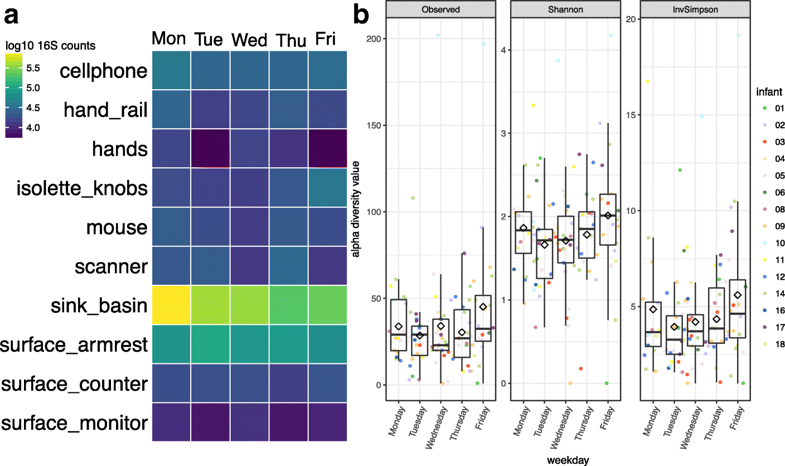There is a new paper of interest from Jill Banfield’s lab. I found out about it via Twitter:
Study on the NICU microbiome out now in @MicrobiomeJ – The developing premature infant gut microbiome is a major factor shaping the microbiome of neonatal intensive care unit rooms. https://t.co/GEtMkLxwUy @bmbrook @MattagenOlmics @mcgrath_bio @dahanome
— The Banfield Lab (@BanfieldLab) June 29, 2018
The abstract is below:
The neonatal intensive care unit (NICU) contains a unique cohort of patients with underdeveloped immune systems and nascent microbiome communities. Patients often spend several months in the same room, and it has been previously shown that the gut microbiomes of these infants often resemble the microbes found in the NICU. Little is known, however, about the identity, persistence, and absolute abundance of NICU room-associated bacteria over long stretches of time. Here, we couple droplet digital PCR (ddPCR), 16S rRNA gene surveys, and recently published metagenomics data from infant gut samples to infer the extent to which the NICU microbiome is shaped by its room occupants. Over 2832 swabs, wipes, and air samples were collected from 16 private-style NICU rooms housing very low birth weight (< 1500 g), premature (< 31 weeks’ gestation) infants. For each infant, room samples were collected daily, Monday through Friday, for 1 month. The first samples from the first infant and the last samples from the last infant were collected 383 days apart. Twenty-two NICU locations spanning room surfaces, hands, electronics, sink basins, and air were collected. Results point to an incredibly simple room community where 5–10 taxa, mostly skin-associated, account for over 50% of the amplicon reads. Biomass estimates reveal four to five orders of magnitude difference between the least to the most dense microbial communities, air, and sink basins, respectively. Biomass trends from bioaerosol samples and petri dish dust collectors suggest occupancy to be a main driver of suspended biological particles within the NICU. Using a machine learning algorithm to classify the origin of room samples, we show that each room has a unique microbial fingerprint. Several important taxa driving this model were dominant gut colonizers of infants housed within each room. Despite regular cleaning of hospital surfaces, bacterial biomass was detectable at varying densities. A room-specific microbiome signature was detected, suggesting microbes seeding NICU surfaces are sourced from reservoirs within the room and that these reservoirs contain actively dividing cells. Collectively, the data suggests that hospitalized infants, in combination with their caregivers, shape the microbiome of NICU rooms.
